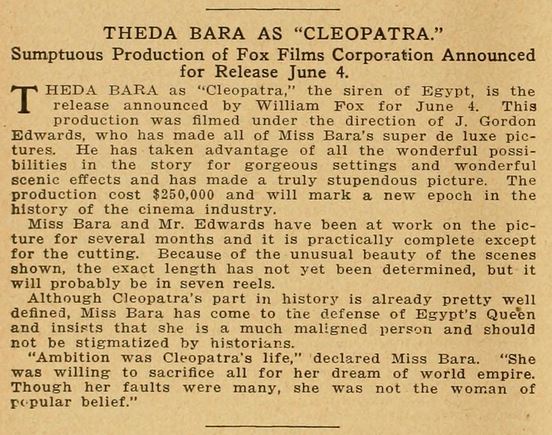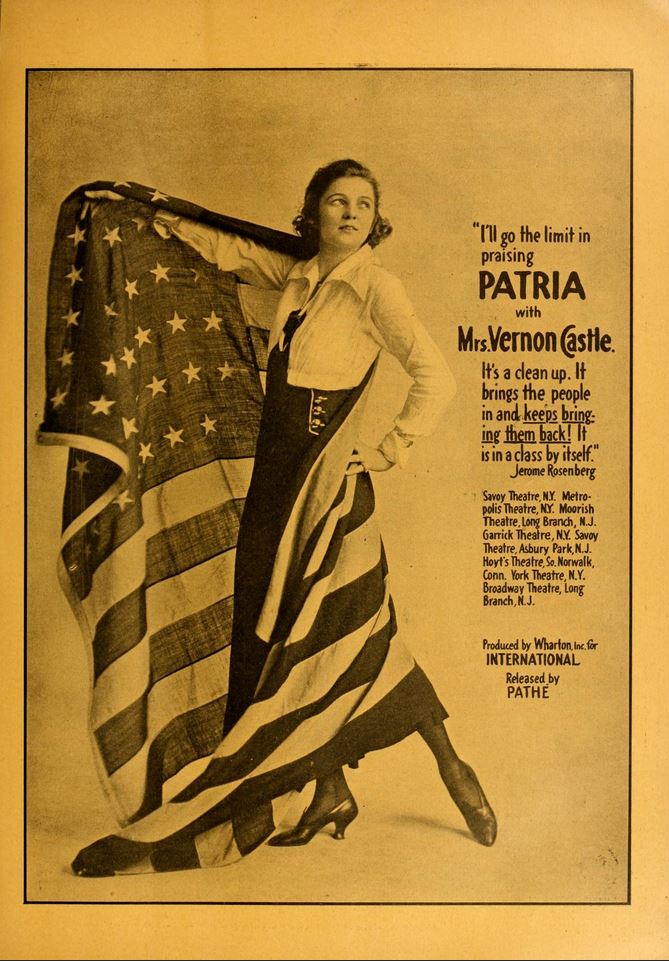 |
| Aircraft Journal, 07-June-1919 |
After serving in the US Army Air Service during World War I, Ormer
Locklear became a barnstormer who specialized in wing walking. He and
his partner Milton (Skeets) Elliot toured the country thrilling audiences. The Great Air Robbery was Locklear's first starring movie role. While shooting his second starring movie, The Skywayman
(great title), pilot Elliot was blinded by spotlights during a night
dive and both men were killed. The producers left the scene in the
movie.
Josephus Daniels was the Secretary of the Navy. Harry Hawker, who had been chief test pilot for Sopwith, tried to fly non-stop across the Atlantic on 18-May-1919. His plane crashed in the ocean and Hawker and his navigator had to be rescued. Hawker criticized the first transatlantic flight, made in May, 1919 by a group of US Navy flying boats. It was not a non-stop flight and it was not intended to be one.
Ormer Locklear, Premier Acrobat of the Air
Thrilling Feats Performed by Him and Others Before the Memorial Day Spectators at Sheepshead Bay
Lieut. Ormer Locklear trifled with death standing erect on the upper wing of a speeding airplane and later jumped from one plane to another, May 30, at Sheepshead Bay Speedway.
Lieutenant Locklear’s feats were the most sensational in the view of most of the crowd, but the aerial antics of Lieuts. Shirley Short and Milton Elliott, his pilots, and of Jean Momenjoz, caused the worst shudders to army and navy aviators in the crowd. Lieutenant Elliott, especially, took a long chance on his skill with the stick, when, starting at a thousand feet he come downward, his machine rolling around, upside down, with wings vertical, tail downward, and every which way, seemingly absolutely out of control, but actually under the most rigid guidance. He finished less than 200 feet from the ground with an Immelman turn and a few other rotations which seemed like certain death.
Locklear’s Daring Feat
Lieutenant Locklear’s most daring trick came at the end of the program. Curtiss plane No. 7, with Lieutenant Elliott at the stick, on whose eye and arm Locklear usually depends most for his safety, went out of commission just before the aerial derby, so he went up in the plane of Lieut. H. B. Shields. Higher and higher the plane mounted, followed by another Curtiss plane piloted by Lieutenant Short.
Finally at probably a thousand feet Lieutenant Short dropped over the side a flimsy looking rope ladder, which was sent whirling backward by the force of the speed of the plane. Then the risky work began, the business of getting the two speeding planes sufficiently near and yet not near enough for the collision which would mean death for three men. To add to their difficulty the two pilots, their planes making better than 60 miles an hour, must get together at just the right time so that the public, sitting comfortably in the stands, could see the whole thing at as close range as possible.
Black against the blue sky the figure of Lieutenant Locklear suddenly appeared in the upper wing of Shields’ plane. He stood erect, his body inclined against the rush of air which would throw an average man to his face on the ground, his arms stretched outward and his head up, with eyes fixed on the swaying ladder dangling from the plane above. Slowly, almost imperceptibly the machines drifted together, while Locklear somehow retained his footing on the smooth, curving surface of the plane.
Has No Imitators
Then the ladder swung for an instant within reach. Locklear grasped at it, and as he did so the plane below dived downward and the one above loomed upward with his body swinging below the ladder. He had successfully accomplished once more the feat in which he has as yet no imitators.
Lieutenant Locklear had begun his exhibition in or rather on Lieutenant Elliott’s plane at a much lower altitude, walking out on the lower wing and thrusting one arm and leg outward into space, standing erect on the upper wing, sliding down to the tail and crawling up again and dangling by his knees from the axle of the plane with head downward.
The Aerial Derby
Four men started in the aerial derby, an alleged race of 20 miles in which the pilots, Domonjoz and Lieutenants Shields, Short and Micelli, rested themselves and their spectators by some straight flying. Little Domonjoz and his Bleriot, which, it is said, is a 1913 model, were left far behind by the other pilots. To soothe his feeling Domonjoz left the race flat and went further aloft to comfort himself and soothe his machine by a little more upside down flying. He refused to come down until long after the race was over and Locklear was about to perform his most dangerous trick.
The other pilots buzzed around the 2-mile track and over the stand about ten times, and then speeded up for the finish, making real speed for a few moments. Lieutenant Shields was officially first, with Lieutenants Short and Micelli following. The time was 16 minutes 45 seconds.
==============================================================
Resents Hawker’s Slur
Ormer Locklear, airplane acrobat, has wired to Secretary Daniels as follows:
“Like all red-blooded Americans, I resent the slur cast by Mr. Hawker on the great flight across the Atlantic by our naval fliers. To prove that Britain has no corner on courage among fliers I deeply desire to make an attempt to fly to Europe under conditions identical with those surrounding the Hawker attempt. I wish no convoys nor assistance from the government, except to be supplied with an able navigator. I am sure there are many men in your service who gladly will volunteer to make the trip with me. I am asking the American airplane and motor builders to join me in the attempt.
“I propose to defray all my personal expenses, pledge the London Daily Mail prize, if won, to the Red Cross, and agree not to accept one penny from any source as a reward.”
Locklear purposes to start within thirty days without any long drawn out preliminaries.
































